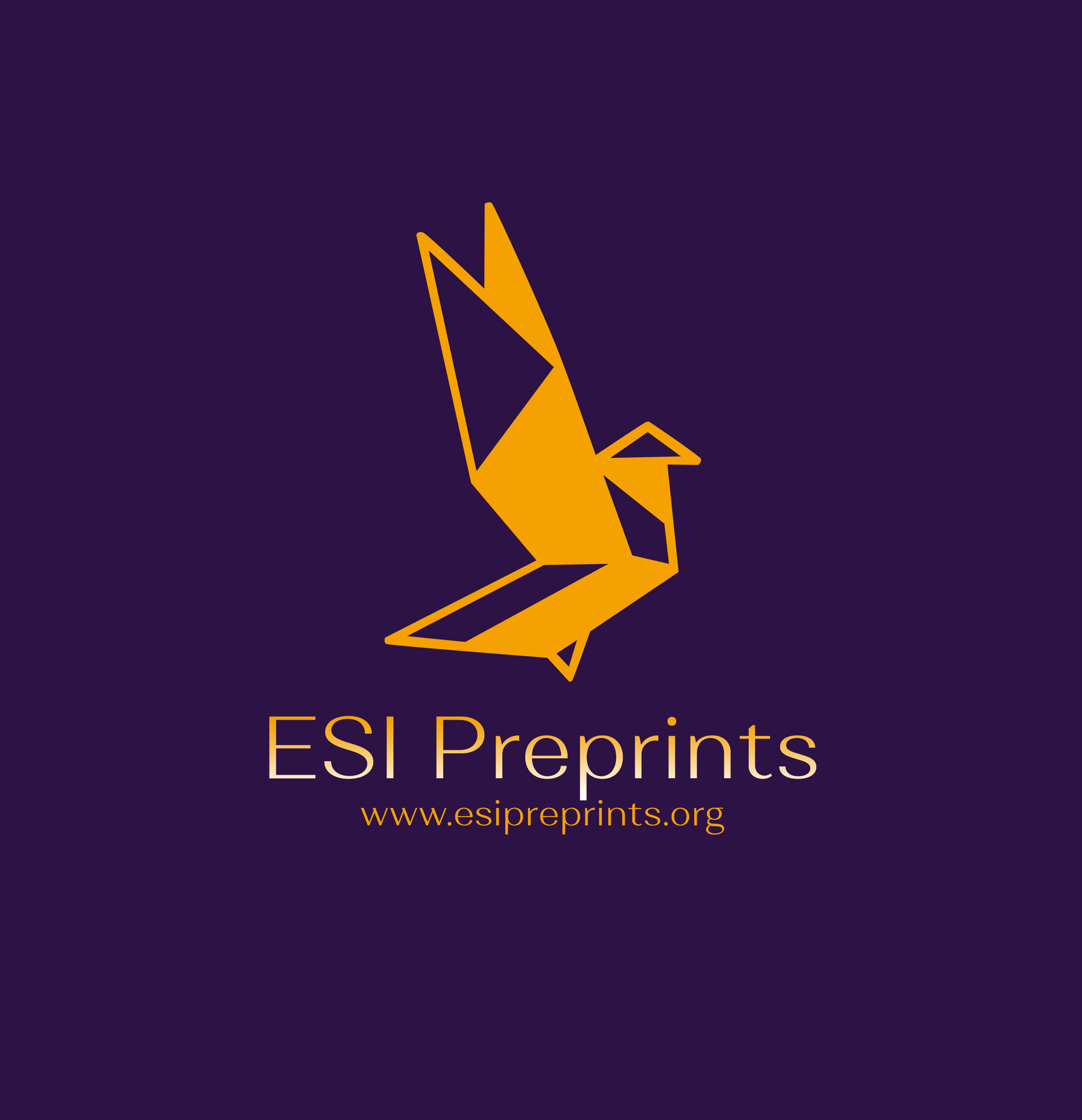The Impact of Takaful Insurance on the Manufacturing Industry in Malaysia: Empirical Evidence through ARDL Bounds Testing Approach
Abstract
In post-financial crisis, the interconnection between the financial sector and real activity is gaining more interest in the literature. Given that the insurance sector represents a large part of the financial globe, it will be essential to explore its impact on the real economy. Further, the expansion of participative finance, in the last decade, requires contextualising the question in this sense. However, this paper experiments the effect of the Takaful insurance on real activity in Malaysia. Hence, an ARDL model is estimated on quarterly data between 2010Q1 and 2017Q4. The results show a positive and significant impact of the increase in Takaful contributions on manufacturing activity. On the same side, a long-term relationship between the two sides is established in the image of a significative cointegration.
Downloads
Metrics
References
2. Ansari, Sanaullah, and Zakaria Bin Bahari. 2021. “The Role of Micro Takaful Industry for the Achievement of Islamic Financial Inclusion in Pakistan.” Middle East J. of Management 8(2/3).
3. Archer, Simon, Rifaat Ahmed Abdel Karim, and Volker Nienhaus. 2012. Takaful Islamic Insurance: Concepts and Regulatory Issues Takaful Islamic Insurance: Concepts and Regulatory Issues.
4. Arena, Marco. 2014. “Does Insurance Market Activity Promote Economic Growth ? A Cross-Country Study for Industrialized and Developing Countries Does Insurance Market Activity Promote A Cross-Country Study Economic Growth ? For Industrialized and Developing Countries.” 75(4): 921–46.
5. Asteriou, Dimitrios, and Konstantinos Spanos. 2018. “PT US CR.” Finance Research Letters. https://doi.org/10.1016/j.frl.2018.05.011.
6. Billah, Mohd Ma’Sum. 2019. Islamic Insurance Products Islamic Insurance Products.
7. Creel, Jérôme, Paul Hubert, and Fabien Labondance. 2014. “Financial Stability and Economic Performance ☆.” Economic Modelling. http://dx.doi.org/10.1016/j.econmod.2014.10.025.
8. Dash, Saurav et al. 2018. “Insurance Market Penetration and Economic Growth in Eurozone Countries : Time Series Evidence on Causality.” Future Business Journal 4(1): 50–67. https://doi.org/10.1016/j.fbj.2017.11.005.
9. Faisal, Mohammad. 2016. “Micro-Takaful in India: A Path toward Financial Inclusion and Sustainable Development.” In Takaful and Islamic Cooperative Finance,.
10. Gherbi, Abdelhalim Ammar. 2020. “The Role of Bancatakāful in Developing and Protecting the Islamic Financial Industry.” Journal of King Abdulaziz University, Islamic Economics 33(3).
11. Greuning, Hennie van, and Zamir Iqbal. 2007. “Banking and the Risk Environment.” Islamic Finance: The Regulatory Challenge: 9–39.
12. Haiss, Peter, and Kjell Sümegi. 2008. “The Relationship between Insurance and Economic Growth in Europe: A Theoretical and Empirical Analysis.” In Empirica,.
13. Hamza, Hichem, and Zied Saadaoui. 2013. “Investment Deposits, Risk-Taking and Capital Decisions in Islamic Banks.” Studies in Economics and Finance 30(3): 244–65.
14. Haroun, Afaf Eltahir, and Mohd Effandi. 2019. “Micro-Takaful as Stimulus for Financial Inclusion : A Key Component towards Sustainable Development.” Open international Journal of Informatich (OIJI) 7(2).
15. Hasan, Maher, and Jemma Dridi. “The Effects of the Global Crisis on Islamic and Conventional Banks : A Comparative Study.”
16. Hassan, Hafiz Ali. 2020. “Takaful Models: Origin, Progression and Future.” Journal of Islamic Marketing 11(6).
17. Hussain, Mher Mushtaq, and Ahmad Tisman Pasha. 2012. “CONCEPTUAL AND OPERATIONAL DIFFERENCES BETWEEN GENERAL TAKAFUL AND CONVENTIONAL INSURANCE.” Australian Journal of Business and Management Research 01(08).
18. Ibrahim, Mansor H. 2016. “Business Cycle and Bank Lending Procyclicality in a Dual Banking System.” Economic Modelling 55: 127–34. http://dx.doi.org/10.1016/j.econmod.2016.01.013.
19. Ismail, Wan Zamri Wan, Mohd Faiz Mohamed Yusof, and Ismail Ahmad. 2021. “Capital Management for Takaful Business: Issues and Challenges.” Journal of Advanced Research in Business and Management Studies 22(1): 8–19.
20. Izzati, Nor, Mohd Aziz, and Salina Kassim. 2020. 2 International Journal of Advanced Research in Economics and Finance The Contributions of Takaful Industry towards Economic Growth, Savings and Investment in Malaysia. http://myjms.mohe.gov.my/index.php/ijaref.
21. Malik, Adnan, and Karim Ullah. 2019. Introduction to Takaful: Theory and Practice Introduction to Takaful: Theory and Practice.
22. Pesaran, M. Hashem, Yongcheol Shin, and Richard J. Smith. 2001. “Bounds Testing Approaches to the Analysis of Level Relationships.” Journal of Applied Econometrics 16(3).
23. Rawat, Amna Sohail, and Syed Kumail Mehdi. 2017. “The Impact of Islamic Banks and Takaful Companies on Economic Growth: A Case of Pakistan.” Journal of Finance & Economics Research 2(2).
24. Report, Stability. 2021. “Stability Report 2021.”
25. Shahid, Irfan. 2018. “Macroeconomic Essence of Takaful: Exploring the Significance and Impact of Takaful in Macroeconomic Context.” Journal of Emerging Economies and Islamic Research 6(1).
26. Ward, Damian, and Ralf Zurbruegg. 2000. “Does Insurance Promote Economic Growth? Evidence from OECD Countries.” The Journal of Risk and Insurance 67(4).
27. Yazid, Ahmad Shukri, Juliana Arifin, Mohd Rasid Hussin, and Wan Norhayate Wan Daud. 2012. “Determinants of Family Takaful (Islamic Life Insurance) Demand: A Conceptual Framework for a Malaysian Study.” International Journal of Business and Management 7(6).
Copyright (c) 2023 Achmakou Lahoucine

This work is licensed under a Creative Commons Attribution 4.0 International License.








